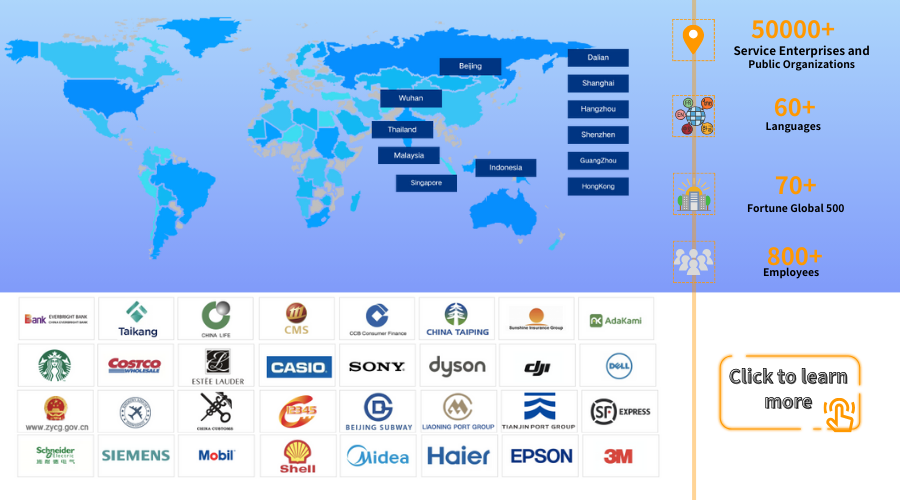Enterprise Online Customer Service Work Order Management System, Connecting the Online Market for Commodity Consumption
文章摘要:Amid the surge of live-streaming e-commerce penetration exceeding 25% and instant retail sales surpassing ¥500 billion, the small goods industry is undergoing a profound shift from traditional wholesale to omnichannel retail. Data from a stationery merchant at the Yiwu International Trade City shows that the proportion of online orders surged from 18% in 2020 to 57% in 2023, with daily customer service inquiries exceeding 800. This OMO model of "online order placement-offline delivery" has exposed three major pain points in traditional service management:
Amid the surge of live-streaming e-commerce penetration exceeding 25% and instant retail sales surpassing ¥500 billion, the small goods industry is undergoing a profound shift from traditional wholesale to omnichannel retail. Data from a stationery merchant at the Yiwu International Trade City shows that the proportion of online orders surged from 18% in 2020 to 57% in 2023, with daily customer service inquiries exceeding 800. This OMO model of "online order placement-offline delivery" has exposed three major pain points in traditional service management:
-
Fragmented Channels: Inquiries from eight platforms, including Douyin, Taobao, and Pinduoduo, are scattered, forcing customer service agents to switch between 12 windows.
-
Disconnected Fulfillment: Online agents lack visibility into offline warehouse inventory, often requiring secondary confirmation for delivery time inquiries.
-
Data Silos: Customer service records are not integrated with ERP and WMS systems, leading to a lengthy 7-day cycle for after-sales returns and exchanges.
As a digital hub connecting customers, service agents, warehouses, and logistics, the Enterprise Online Customer Service Work Order Management System (hereafter referred to as the "Work Order System") is becoming a core tool for the small goods industry to overcome service bottlenecks.
II. Core Scenarios and Challenges of Work Order Management in the Small Goods Industry
(1) Integrated Handling of Multi-Platform Inquiries
The small goods industry is characterized by a vast number of SKUs (averaging over 5,000), low average order values (¥35), and high-frequency inquiries. A typical jewelry merchant handles daily inquiries as follows:
-
42%: Delivery time queries
-
28%: Inventory status confirmation
-
19%: Return and exchange policy inquiries
-
11%: Product combination suggestions
Traditional manual processing results in:
-
Average response time of 23 minutes (industry best practice: ≤3 minutes)
-
Inventory information error rate of 17%
-
40% of manpower consumed by repetitive questions
(2) Fulfillment Challenges of Online-Offline Coordination
The "online order-offline delivery" model requires:
-
Real-time inventory synergy: Agents need instant access to accurate inventory across five national warehouses.
-
Visible logistics tracking: Customers demand end-to-end tracking from packing to delivery.
-
Rapid exception handling: Issues like stockouts, wrong shipments, or damages must be resolved within 2 hours.
A case study of a home goods company revealed that without system coordination:
-
The oversell rate reached 8.6%
-
Logistics complaints accounted for 31% of all issues
-
The average fulfillment cycle was 5.2 days
(3) Service Data Accumulation and Value Mining
Customer complaint data in the small goods industry holds significant commercial value:
-
A toy company discovered through work order analysis that 23% of returns for a building block set were due to unclear instructions.
-
A stationery brand developed combo sets based on consultation hotspots, increasing the average order value by 40%.
However, under traditional methods:
-
85% of customer service dialogues are not stored in a structured manner.
-
Service data is completely isolated from product development and supply chain departments.
-
Customer profile completeness is below 30%.
Enterprise Online Customer Service Work Order System: Unlocking the Online Market for Small Goods Consumption
III. Functional Architecture and Value Creation of the New-Generation Work Order System
(1) Omnichannel Intelligent Access and Automatic Dispatch
-
Unified Workspace: Integrates 12 channels, including WeChat Mini Programs, Douyin Stores, and 1688, enabling "all inquiries processed in one interface."
-
Intelligent Routing Engine: Automatically assigns work orders based on four dimensions: product category, customer tier, issue type, and warehouse inventory.
-
Example: A Beijing customer inquiring about a thermos cup’s inventory is prioritized to a North China warehouse agent.
-
-
AI Preprocessing: Uses NLP to identify inquiry intent and automatically responds to standardized questions (e.g., shipping policies, return processes).
-
After implementation, one enterprise saw a 70% efficiency increase in handling simple queries and a 35% reduction in labor costs.
-
(2) Fulfillment Hub for Deep Online-Offline Coordination
-
Real-Time Inventory Synergy:
-
Integrates with WMS to provide agents with real-time visibility into national warehouse inventory.
-
Sets safety stock thresholds, automatically triggering replenishment work orders when levels are low.
-
-
Intelligent Logistics Scheduling:
-
Automatically matches the optimal warehouse for shipment based on customer address.
-
Integrates with logistics interfaces like Cainiao and JD.com for real-time tracking updates.
-
-
Closed-Loop Exception Handling:
-
Stockout work orders are automatically forwarded to procurement, with estimated restock times updated in real time.
-
Wrong/damaged shipment work orders generate reverse logistics tickets with end-to-end visual tracking.
-
(3) Service Data-Driven Business Optimization
-
Intelligent Knowledge Base:
-
Transforms 100,000+ customer service dialogues into an FAQ knowledge graph.
-
Supports smart association of common questions on product detail pages (e.g., "Can this keychain be engraved?").
-
-
Customer Profile System:
-
Integrates consultation records, purchase history, and service feedback data.
-
Generates a 360° customer view for precision marketing.
-
-
Operational Analytics Dashboard:
-
Displays real-time data on inquiry volume, conversion rates, and top 10 customer complaints across channels.
-
Automatically generates service cost analysis reports (labor, logistics, return/exchange costs).
-
IV. Implementation Path and Typical Benefits
(1) Phased Implementation Strategy
-
Foundation Building (1-3 months):
-
Complete system deployment and channel integration.
-
Establish standardized work order templates and SLA rules.
-
-
Process Optimization (4-6 months):
-
Achieve data integration with inventory and logistics systems.
-
Deploy AI preprocessing and intelligent routing.
-
-
Value Deepening (7-12 months):
-
Build customer profiles and precision marketing systems.
-
Develop product optimization mechanisms driven by service data.
-
(2) Quantifiable Performance Improvements
| Metric | Pre-Implementation | Post-Implementation | Improvement |
|---|---|---|---|
| First Response Time | 23 minutes | 2m 15s | 90.2% |
| Work Order Cycle Time | 5.2 days | 1.8 days | 65.4% |
| Inventory Accuracy | 82% | 98.5% | 20.1% |
| Customer Satisfaction | 78 points | 92 points | 17.9% |
| Efficiency Ratio | 1:120 | 1:350 | 191.7% |
(3) Success Case Study
After implementing the work order system, a Yiwu small goods enterprise achieved:
-
Agent Efficiency: Daily processing capacity per agent increased from 180 to 420 orders.
-
Inventory Turnover: Stock turnover rate improved by 40% through stockout alerts.
-
Customer Repurchase: A "replenishment reminder" feature developed from service data increased repeat purchase rates by 28%.
-
Cost Savings: Annual service costs reduced by ¥5.2 million, with logistics costs dropping by 35%.

V. Future Evolution Directions
(1) Deep AI Integration
-
Digital Agent Customer Service: Handles 70% of standardized inquiries, enabling 24/7 service.
-
Intelligent Forecasting: Predicts inquiry peaks based on historical data and automatically adjusts agent schedules.
-
Sentiment Analysis: Identifies customer emotions through voice and tone, triggering escalated service mechanisms.
(2) Supply Chain Synergy Upgrade
-
VMI Supplier Management: Syncs work order data with supplier systems for JIT replenishment.
-
Reverse Logistics Optimization: Uses return/exchange data to improve packaging design and quality control processes.
-
Cross-Border Service Support: Integrates customs clearance and international logistics modules to support global expansion.
(3) Data Asset Monetization
-
Paid Service Knowledge: Packages industry solutions into SaaS products for external commercialization.
-
Consumer Trend Insights: Identifies emerging product opportunities through consultation hotspot analysis.
-
Supply Chain Finance: Provides credit endorsements for suppliers based on service data.
VI. Conclusion: From Cost Center to Growth Engine
The Enterprise Online Customer Service Work Order Management System is reshaping the service logic of the small goods industry. Its value extends beyond mere service efficiency tools, evolving into a core hub connecting consumer internet and industrial internet. When the system can sense customer needs in real time, precisely drive supply chain responses, and continuously create commercial value, the customer service department transforms from a cost center into a profit center. In this digital transformation, enterprises that率先 achieve end-to-end digitalization of services will build unparalleled competitive advantages in the new consumer era, truly realizing the industry upgrade of "service as marketing, data as asset."
Udesk Enterprise Online Customer Service Work Order Management System enables teams to complete tasks efficiently and helps enterprises rapidly improve productivity. Integrating with over 20 global communication channels, it seamlessly connects you with customers worldwide. Work orders are automatically routed and assigned based on business needs, ensuring precision and efficiency. Each work order includes comprehensive business information and integrates multi-dimensional data related to customers, companies, and operations, providing a complete and transparent overview at a glance.
The article is original by Udesk, and when reprinted, the source must be indicated:https://www.udeskglobal.com/blog/enterprise-online-customer-service-work-order-management-system-connecting-the-online-market-for-commodity-consumption.html

 Customer Service& Support Blog
Customer Service& Support Blog


